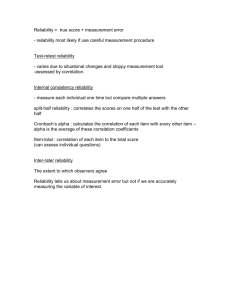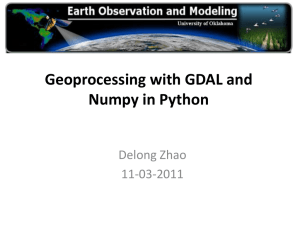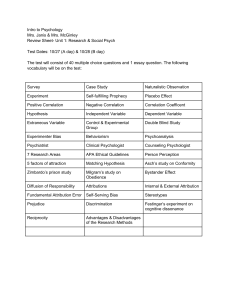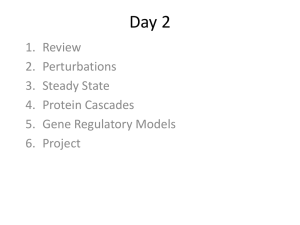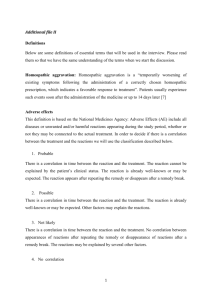rcm7043-sup-0001-Supplementary
advertisement
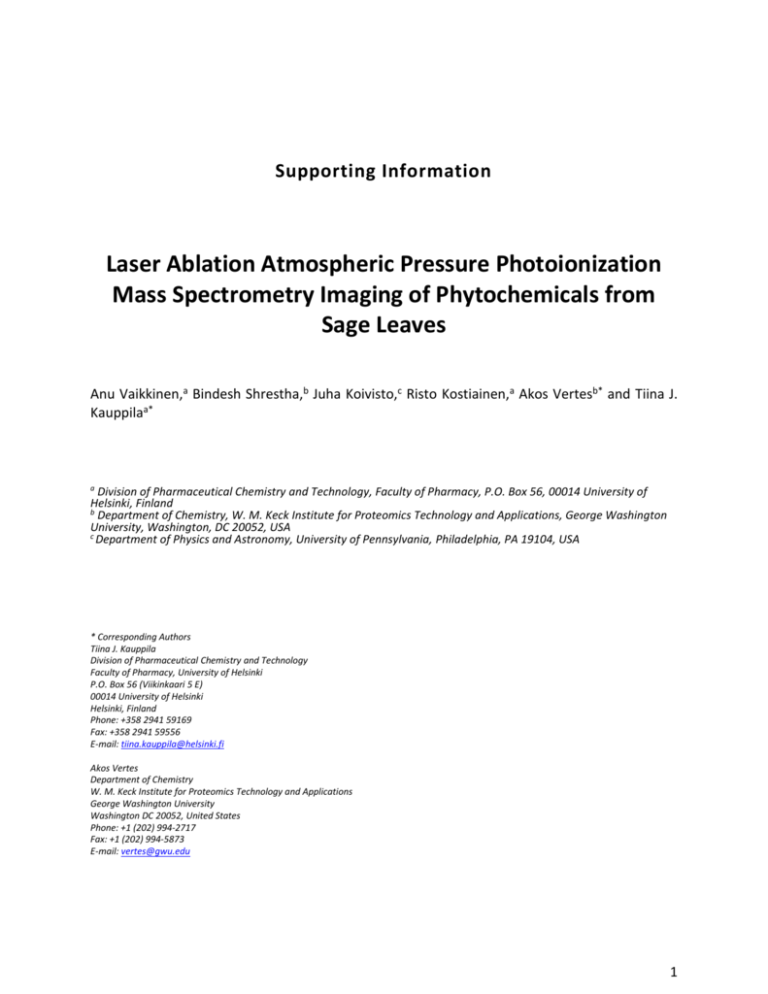
Supporting Information
Laser Ablation Atmospheric Pressure Photoionization
Mass Spectrometry Imaging of Phytochemicals from
Sage Leaves
Anu Vaikkinen,a Bindesh Shrestha,b Juha Koivisto,c Risto Kostiainen,a Akos Vertesb* and Tiina J.
Kauppilaa*
a
Division of Pharmaceutical Chemistry and Technology, Faculty of Pharmacy, P.O. Box 56, 00014 University of
Helsinki, Finland
b
Department of Chemistry, W. M. Keck Institute for Proteomics Technology and Applications, George Washington
University, Washington, DC 20052, USA
c
Department of Physics and Astronomy, University of Pennsylvania, Philadelphia, PA 19104, USA
* Corresponding Authors
Tiina J. Kauppila
Division of Pharmaceutical Chemistry and Technology
Faculty of Pharmacy, University of Helsinki
P.O. Box 56 (Viikinkaari 5 E)
00014 University of Helsinki
Helsinki, Finland
Phone: +358 2941 59169
Fax: +358 2941 59556
E-mail: tiina.kauppila@helsinki.fi
Akos Vertes
Department of Chemistry
W. M. Keck Institute for Proteomics Technology and Applications
George Washington University
Washington DC 20052, United States
Phone: +1 (202) 994-2717
Fax: +1 (202) 994-5873
E-mail: vertes@gwu.edu
1
SCRIPT FOR PRODUCING THE MS IMAGES
The algorithms are written with Python programming language utilizing version 2.7 and
corresponding numpy, scipy and matplotlib libraries. The goal of the first function is to combine
the time-location and time-intensity data and to create location-intensity maps
(getIntensityMap). The second function (getColocalizationMap) calculates the Pearson
colocalization maps. The rest of the functions are for plotting and for visualizing the data in a
meaningful way. Sample images are given below.
import numpy
import pylab
import matplotlib
def getIntensityMap(jmcFn, timeFn, gridShape = (22,51)):
"""
Combine time-intensity data to x-y-time data. TimeFn contains
the times when spot xy is exposed to ablation. jmcFn contains
the time intensity data (1 Hz). The output is the integrated
intensity iMap at positions xMap,yMap. The algorithm
integrates from the time the spot is exposed to ablation until
a) 5 data points are read or b) the next spot is exposed,
whichever is shorter.
inputs
jmcFn
: Time-intensity data filename produced by mass
spectrometer software
Two columns: time and intensity.
timeFn
: X-y-time data filename produced by xy-stage
software.
Three columns: x, y and entry time.
gridShape : Number of (horizontal, vertical) spots.
outputs
xMap
yMap
iMap
: 2D array of x-coordinates
: 2D array of y-coordinates
: 2D array of integrated intensities
usage:
from intensityMap import getIntensityMap
import pylab
xMap, yMap, iMap = getIntensityMap('EIC 136.jmc',
'salvia time.txt')
iMap[iMap > 20000] = 20000
# threshold
pylab.contourf(xMap, yMap, iMap)
pylab.show()
"""
# load time-intensity to array
ti = numpy.loadtxt(jmcFn)
# load x-y-time to array
2
xyt = numpy.loadtxt(timeFn)
# create time and intensity vectors
t_i = ti[:,0]
i_i = ti[:,1]
# create x,y and time intensity vectors
x_xy = xyt[:,0]
y_xy = xyt[:,1]
t_xy = xyt[:,2]
# create vectors for output
xMap = []
yMap = []
iMap = []
# create index vector for convenience
indexVector = numpy.arange(len(t_i))
# loop through all spot times
for i in range(len(t_xy)):
# get time intervals corresponding to current spot
startTime = t_xy[i]
try:
endTime = t_xy[i+1]
except: # last point is missing, extrapolate end time
step = t_xy[i] - t_xy[i-1]
endTime = startTime + step
# get indices corresponding to start and end time
minIndex = numpy.min(indexVector[t_i >= startTime])
maxIndex1 = numpy.min(indexVector[t_i >= endTime])
# apply "max 5 points" restriction
maxIndex2 = minIndex + 5
maxIndex = numpy.min([maxIndex1, maxIndex2])
# integrate over possibly variable length vector
intensityVector = i_i[minIndex:maxIndex]
intensity = numpy.mean(intensityVector)*5
# put results to vectors
xMap.append(x_xy[i])
yMap.append(y_xy[i])
iMap.append(intensity)
# reshape to 2D numpy array
xMap = numpy.array(xMap).reshape(gridShape)
yMap = numpy.array(yMap).reshape(gridShape)
iMap = numpy.array(iMap).reshape(gridShape)
return xMap, yMap, iMap
def getColocalizationMap(iMap1, iMap2):
"""
Calculates pearson colocalization map from N dimension intensity maps.
3
The intensity maps are assumed to have the same spatial coordinates.
iMap1, iMap2
returns
: intensity maps produced by e.g. getIntensityMap
function. same shape is assumed.
: Pearsons correlation map with the same shape as
iMap1 and iMap2
"""
ave1Rem = (iMap1 - numpy.mean(iMap1))
ave2Rem = (iMap2 - numpy.mean(iMap2))
std1 = numpy.std(iMap1)
std2 = numpy.std(iMap2)
return ave1Rem*ave2Rem/(std1*std2)
def plotIntensityMap(xMap, yMap, iMap,
threshold = 32000,
xShift = -2,
yShift = -2,
contourStep = 0.02,
colorTickValues = [0,25,50,75]):
"""
Plots intensity map relative to maximum intensity (i.e. intensity in
procents). Values higher than <threshold> are cut away.
Spatical locations are shifted by <xShift> and <yShift>. Contourlines
are with spacing of <contourStep> and contourlabels are in procent
indicated by <colorTickValues>. Also, the maximum relative intensity is
shown if the threshold cuts the peaks. Runs tweakPlot at the end for
nice visualization.
xMap
yMap
iMap
threshold
xShift
yShift
contourStep
contourTickValues
"""
:
:
:
:
:
:
:
:
2D array of x-coordinates
2D array of y-coordinates
2D array of integrated intensities
cut peaks if hihgher than this (absolute values)
shift x-coordinate (for pretty output)
shift y-coordinate (for pretty output)
step between contourlines
values shown in colorbar
# apply threshold
maxIntensity = numpy.max(iMap)
if threshold:
iMap[iMap > threshold] = threshold
# scale to 100 %
iMap = iMap * 100.0/maxIntensity
contourVector = numpy.arange(numpy.min(colorTickValues),
numpy.max(iMap) + contourStep,
contourStep)
im=pylab.contourf(xMap+xShift, yMap+yShift, iMap,
contourVector)
# color tick values
#ctv = [numpy.min(iMap)]
ctv = colorTickValues
4
ctv += [numpy.max(iMap)]
# color tick labels
ctl = []
for value in ctv:
ctl.append("%d %%" % (value))
if ctv[-1] < 99.9:
ctl[-1] = "> %d %%" % (numpy.round(ctv[-1]))
# make it look nice
tweakPlot(im, ctv, ctl)
def plotPearsonCorrelationMap(xMap, yMap, pMap, logColor=True,
lowerThres = 0.07, xShift = -2, yShift = -2):
# remove small values (noise)
pMap[pMap < lowerThres] = lowerThres
# suppress peaks by log (or not)
if logColor:
pMap = numpy.log(pMap)
# create colorLabels and values
cbarValues = numpy.arange(numpy.min(pMap), numpy.max(pMap))
if logColor:
cbarLabels = numpy.round(numpy.exp(cbarValues),2)
else:
cbarLabels = numpy.round(cbarValues,2)
# plot contourplot
im = pylab.contourf(xMap+xShift, yMap+yShift, pMap, 100,
cmap = matplotlib.cm.bone)
# make it look nice
tweakPlot(im, cbarValues, cbarLabels)
def tweakPlot(image, colorbarvalues, colorbarlabels, fontsize = 15):
"""
Tweaks plot: colorbars, labels, fontsizes, positions, etc.
Operates on current figure: pylab.gcf() and axis: pylab.gca().
image
colorbarvalues
colorbarlabels
: contourplot image to which colorbar is attached
: array of values where to put colorbar labels
: array of strings (or floats) of corresponding
to <colorbarvalues>
"""
# tweak axis
ax = pylab.gca()
ax.invert_xaxis()
ax.set_aspect('equal')
# tweak labels
pylab.xlabel('x (mm)', fontsize= fontsize)
pylab.ylabel('y (mm)', fontsize= fontsize)
for label in ax.get_xticklabels() + ax.get_yticklabels():
5
label.set_fontsize(fontsize)
pylab.subplots_adjust(left=0.1, right=0.78, top=0.9, bottom=0.1)
# tweak colorbar
fig = pylab.gcf()
axcb = fig.add_axes([.8, 0.17, 0.02, .65])
cb = fig.colorbar(image, cax=axcb, extend='both')
cb.set_ticks(colorbarvalues)
try:
axcb.set_yticklabels(numpy.round(colorbarlabels,2))
except:
axcb.set_yticklabels(colorbarlabels)
for label in axcb.get_xticklabels() + axcb.get_yticklabels():
label.set_fontsize(fontsize)
label.set_ha('left')
pos = label.get_position()
label.set_position((pos[0] + 0, pos[1]))
if __name__ == "__main__":
# Figure 1, intensity map of mass 136
pylab.figure(1, figsize=(12, 5))
xMap, yMap, iMap = getIntensityMap('EIC 136.jmc',
'salvia time.txt')
plotIntensityMap(xMap, yMap, iMap)
pylab.savefig('exampleIntensity.png')
# Figure 2, pearson correlation map for masses 136 and 153
pylab.figure(2, figsize=(12, 5))
xMap2, yMap2, iMap2 = getIntensityMap('EIC 153.jmc',
'salvia time.txt')
pMap = getColocalizationMap(iMap2, iMap)
plotPearsonCorrelationMap(xMap, yMap, pMap)
pylab.savefig('exampleCorrelation.png')
pylab.show()
6
Example 1. Distribution of m/z 136.14 signal from sage leaf with intensity threshold at 89 %
(see also Figure 3c of the main text).
Example 2. Colocalization of ions at m/z 136.14 and 456.35 in the sage leaf.
7
CORRELATION AND COLOCALIZATION ANALYSIS
Correlation analysis of the ion intensities was performed to investigate whether the observed
ions could have been produced by fragmentation or oxidation from other species. It was
assumed that localized biological conversions could be distinguished from those occurring due
to exposure to air or during ionization, because the latter are repeatable and independent of
the location and thus result in high correlation of the respective ion abundances. The analysis
was similar to that reported previously for LAESI-MSI. [1, 2]
The correlation analysis was performed by plotting the intensities of two ions of interest at
each recorded data point against each other using OriginPro 8.6.0 (OriginLab Corporation,
Northampton, MA, USA). Note that in addition to the MS image data, the analysis also included
data for sample transfer/wait times between the rows, which resulted in additional data not
included in the images. A scatter plot of the intensity values was obtained for each pair of ions.
The scatter plots were visually inspected and subjected to linear regression analysis. The
obtained values of Pearson’s r (Pearson product-moment cross correlation coefficients) of the
linear fit were considered as the quantitative indicator for the correlation of the spatial
distributions of the two ions. Figure S1 shows representative scatter plots of selected ion pairs
and Table S1 gives an overview of the obtained Pearson’s r values. Tables S2-4 present
additional correlation matrices for the highly correlated ion groups that are reported in Table 1.
Note that only the ions observed from the sage leaves and listed in Table 1 were subjected to
the correlation analysis. Therefore negative (linear) correlation was not found for any of the
studied ion pairs. However, virtually no correlation was found for some of the studied ion pairs
(Pearson’s r ≤ 0.500) and these are highlighted using blue in Tables S1-4, while the pairs with
high correlation (Pearson’s r ≥ 0.975) are highlighted using yellow.
The correlation analysis showed that, e.g., the ion at m/z 286.19 is probably the fragmentation
product of a diterpene (M+. at m/z 332.19), possibly carnosic acid, while the ion at m/z 248.18 is
probably a fragment of the ion(s) at m/z 456.35, 455.35 or 439.35. In addition, possible
products of rapid air or photo-oxidation were detected, e.g., in the case of the ion at m/z
316.20 that could be due to the oxidation of the species at m/z 300.20.
For the colocalization analysis, Pearson colocalization maps were created by calculating
Mij(x,y)= (Ii(x,y) - ‹Ii›)(Ij(x,y) - ‹Ij›)/(σiσj) (where Ii(x,y) is the intensity of ion i at position (x,y), ‹Ii› is
the average of the i ion intensities in the image, and σi is their standard deviation) for each
sampled spot, and plotting the values in 2D format using a custom-written algorithm described
above. Similar analyses had been presented for, e.g., LAESI-MSI data.[1, 2]
[1]
P. Nemes, A. S. Woods, A. Vertes. Anal. Chem. 2010, 82, 982.
[2]
P. Nemes, A. A. Barton, A. Vertes. Anal. Chem. 2009, 81, 6668.
8
a
b
c
d
Figure S1. A scatter plot of the spatially resolved intensities of the ions at m/z a) 456.35 vs
332.19, b) 332.19 vs 286.19, c) 332.19 vs 153.14, and d) 204.20 vs 136.14 in sage leaves. The
high correlation of the intensity of the ions in b) was thought to be due to the loss of CO and
H2O from the ion at m/z 332.19 to produce the ion at m/z 286.19. The lower but still clear
correlation in d) can be explained by the storage of sesqui- (m/z 204.20) and monoterpenes
(m/z 136.14) in similar secretory sites.
9
Table S1. Correlation matrix for selected ion pairs studied by LAAPPI-MSI. Blue background indicates a lack of correlation, and yellow
represents highly correlated ion pairs. The matrix components were chosen to include abundant ions over the range of m/z 100-550,
including all those with MSI images shown in Figure 3 of the main text, as well as those of correlation groups 4 and 7 reported in
Table 1.
Pearson’s r
m/z
136.07
136.14
153.14
155.15
167.12
169.13
204.20
219.17
237.19
248.18
286.19
300.20
316.20
332.19
346.21
439.35
456.35
m/z
136.07
1
0.41413
0.34407
0.28159
0.36808
0.32308
0.34267
0.3838
0.37357
0.38022
0.33673
0.36873
0.40214
0.30056
0.3154
0.41582
0.37911
136.14
153.14
155.15
167.12
169.13
204.20
219.17
237.19
248.18
286.19
300.20
316.20
332.19
346.21
439.35
456.35
1
0.86112
0.93214
0.83737
0.91495
0.94624
0.91886
0.92118
0.32988
0.85828
0.78144
0.75956
0.85844
0.84809
0.33081
0.32741
1
0.90775
0.87826
0.89957
0.86906
0.8948
0.89384
0.33953
0.81743
0.7479
0.7245
0.7878
0.79578
0.34323
0.34715
1
0.84084
0.92427
0.89627
0.89423
0.89765
0.27123
0.80746
0.72106
0.69514
0.81000
0.79594
0.27258
0.27517
1
0.96226
0.79677
0.87549
0.90745
0.3037
0.75374
0.67771
0.67082
0.73289
0.73958
0.30624
0.30989
1
0.86714
0.91269
0.93825
0.29173
0.80969
0.71445
0.69999
0.80509
0.79672
0.28865
0.29331
1
0.96332
0.94663
0.39145
0.92326
0.86228
0.82526
0.92099
0.92267
0.38855
0.38753
1
0.97514
0.47976
0.89458
0.82934
0.7962
0.87964
0.89111
0.48058
0.47882
1
0.34568
0.89867
0.84702
0.82411
0.88435
0.89021
0.34718
0.34718
1
0.35461
0.34049
0.32517
0.33085
0.35388
0.97919
0.98611
1
0.95308
0.91701
0.97614
0.97607
0.34982
0.34966
1
0.97889
0.92339
0.95136
0.34406
0.3417
1
0.89171
0.91336
0.3311
0.32921
1
0.98412
0.32295
0.32521
1
0.34708
0.349
1
0.98632
1
10
Table S2. Correlation matrix for selected ions from sage leaves studied by LAAPPI-MSI
(correlation groups 1-3 in Table 1).
Pearson’s r
m/z
133.12
m/z
147.13
189.17
203.19
133.12
1
147.13
0.86417
1
189.17
0.97265
0.93832
1
203.19
0.9769
0.88638
0.98048
1
204.20
0.90278
0.98189
0.95484
0.9242
204.20
1
Table S3. Correlation matrix for selected highly correlated ions from sage leaves studied by
LAAPPI-MSI (correlation group 6 in Table 1).
Pearson’s r
m/z
286.19
331.19
332.19
286.19
1
331.19
0.9788
1
332.19
0.97614
0.97814
1
346.21
0.97607
0.98266
0.98412
346.21
m/z
1
Table S4. Correlation matrix for selected highly correlated ions from sage leaves studied by
LAAPPI-MSI (correlation group 5 in Table 1).
Pearson’s r
m/z
248.18
m/z
437.34
439.35
455.35
248.18
1
437.34
0.96883
1
439.35
0.97919
0.97788
1
455.35
0.97524
0.99098
0.98122
1
456.35
0.98611
0.99006
0.98632
0.99178
456.35
1
11
